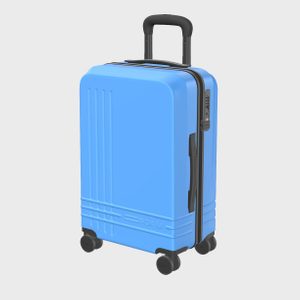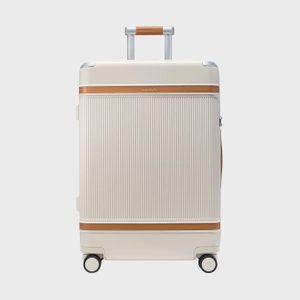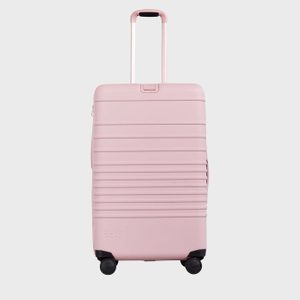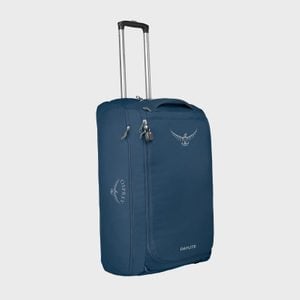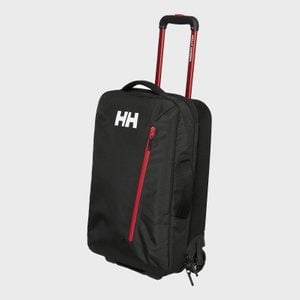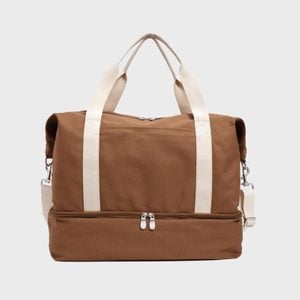Hard vs Soft Luggage: How To Choose The Best Option For Your Travel Style
Updated: Apr. 15, 2024
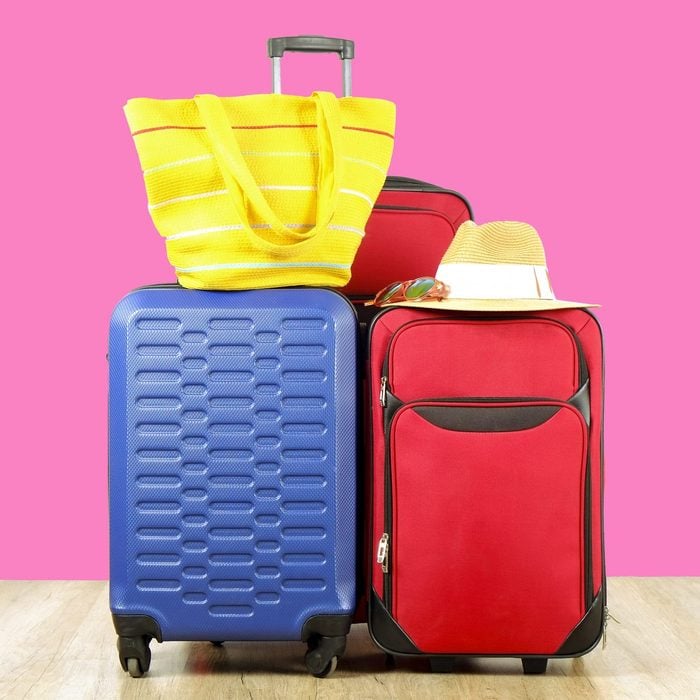
When it comes to hard vs soft luggage, how do you decide which to buy? We compared all their features, including weight, durability, ease of packing and so much more, so you can choose the best suitcase for your needs.
Our editors and experts handpick every product we feature. We may earn a commission from your purchases.
If you’re planning a trip any time soon, you’re probably considering which bags to take, checking out the best luggage brands and trying to answer the most divisive modern-day travel question: Is hard vs soft luggage better?
It is advised to put luggage in the hotel bathroom, here’s the reason why!
The hard vs soft luggage debate rages on because there are so many smart options available for both, whether you’re looking for carry-on bags, underseat luggage, affordable luggage or luggage sets. Soft-sided luggage gives you more packing flexibility, but hard shells protect your belongings better. Also, hard shells tend to be heavier, but soft-sided ones can damage more easily. There are good and bad features for both and, in the end, it really comes down to personal preference.
We’ve weighed the pros and cons of hard vs soft luggage so you can decide not just which one is best, but which one is best for you. Once you’ve made your choice, you’ll be ready to check off your packing list, avoid packing mistakes and head out to your next destination!
Is hard vs soft luggage better?
When looking at hard shell vs soft shell luggage, each have their own distinct benefits. If you’re checking a bag, consider going with a hard shell that will better withstand being thrown around by baggage handlers, sitting on the tarmac in the rain and being tossed on a conveyor belt. The Away polycarbonate flex suitcase and Bigger Carry-On are beautiful-looking choices, as is anything from Béis, founded by Pretty Little Liars actress, Shay Mitchell. Or, Monos, an affordable and sustainable brand beloved by frequent travelers, is another popular pick.
If you’re only traveling with a carry-on, a soft-sided suitcase may serve you better. It can more easily be maneuvered into a tight overhead compartment, and you can easily get to your belongings during a flight because you don’t have to take down and unzip the entire bag. Osprey, Helly Hansen and Lo and Sons all offer soft luggage in a wide variety of sizes and shapes.
Hard shell luggage
Made of durable materials like polycarbonate, acrylonitrile butadiene styrene (ABS) and aluminum, hard shell luggage is practically indestructible. That means everything inside the bag stays well-protected, which is especially important if you’re bringing home fragile purchases from your trip.
Because most hard shell pieces have four wheels rather than two, they’re a breeze to roll through an airport. Bonus points if they’re 360-degree spinner wheels, which offer superior maneuverability so you can even turn your bag sideways when you’re boarding a plane instead of struggling to carry it down the narrow aisle.
When it comes to safety, hard luggage boasts some valuable features. It can’t be slashed or sliced into like fabric bags, and most hard cases have TSA-friendly locks built in so they can’t be cut.
Hard shell luggage is also easy to clean, so even if it does get dirty—and it will—you can usually just wipe off scuff marks with a clean cloth or Magic Eraser.
Pros
- Sturdier and more durable
- Offers better protection for items inside
- Easier to clean
- Tends to come with four spinner wheels and a lock
Cons
- Less flexible space
- Often heavier
Soft-sided luggage
Soft-sided luggage has been around forever and remains a favorite of many frequent travelers because of its flexibility. In fact, its ability to be squished into small spaces is why pilots only travel with soft-sided luggage. There’s a better chance of a soft-sided bag being able to be pushed into an overhead compartment or fit under the bed of a hotel room.
And, when it comes to packing, soft-sided luggage offers the luxury of expansion. You can almost always squeeze just one more item into it—something you’ll definitely want to take into consideration if you’re not a light packer. Also, because the interior of soft-sided pieces is generally one big open space—as opposed to the two divided sides of a hard shell case—you can organize your belongings however you prefer, using packing cubes or the rolling technique.
Soft-sided luggage is generally lighter than hard luggage, so if you’re worried about going over an airline’s weight limit, it’s a smart option, as it gives you more leeway to use those pounds for your belongings rather than for the suitcase.
Pros
- Easier to fit into tight spaces
- Offers more flexibility for packing
- Tends to be lighter
Cons
- Less protection for items inside
- Harder to clean dirt and stains
- Fabric can get torn or be cut
There is no right or wrong answer when it comes to the hard sided luggage vs soft sided debate. It comes down to personal preference, packing needs and figuring out which features are most important to you. As long as you’re happy with your choice and you can pack and travel comfortably, that’s all that really matters!
What to consider when deciding between hard vs soft luggage
- Durability: Hard shell luggage tends to be more durable and can better protect fragile items. Soft shell options offer less protection for items inside, and its fabric can get torn or cut more easily.
- Weight: Hard shell luggage is usually heavier than soft shell models, which can be a factor if you’re trying to avoid excess weight charges or want a lighter bag to carry around.
- Flexibility: Soft exteriors offer more flexibility than hard shells. They fit easier into tight spaces and can expand to accommodate extra items.
- Storage: Soft shell luggage often features exterior pockets and compartments for easy access to frequently used items, while a hard shell has a more streamlined exterior.
- Water-resistance: Hard shell luggage is generally more water-resistant than soft shell luggage, which can be important if traveling to rainy destinations.
- Usage: Consider how you’ll use the luggage. If you travel frequently by air, a durable hard shell might be a better choice. If you’re looking for something more flexible and lightweight for road trips or casual getaways, a soft shell might be more suitable.
- Price: Hard shell luggage tends to be more expensive than soft shell luggage, although this can vary depending on the brand and features.
Why you should trust us
FAQ
Which luggage is best for flying?
Ultimately, the best choice depends on your specific travel requirements and preferences. Airlines don’t have a preference, either, they are more concerned about the size and weight of your luggage. If you’re checking a bag, you’re probably better off with a hard shell for its superior protection. And for carry-ons, soft luggage may be easier to fit into crowded overhead bins, but it offers less protection for fragile belongings.
Do hard suitcases crack?
Hard shells are not completely immune to cracking, especially if subjected to extreme force or impact. However, well-constructed models made from polycarbonate or aluminum are unlikely to crack. Scratches and scuffs are more common.
What luggage is easiest to clean?
A hard shell is much easier to clean. Simply wipe it down with a damp cloth to remove stains, dirt or scuffs. Just opt for water or a mild cleaning product, and always avoid harsh chemicals or abrasive materials to prevent scratching and discoloration. Soft luggage is a bigger pain to clean, plus its fabric is more prone to retaining stains and smells.

